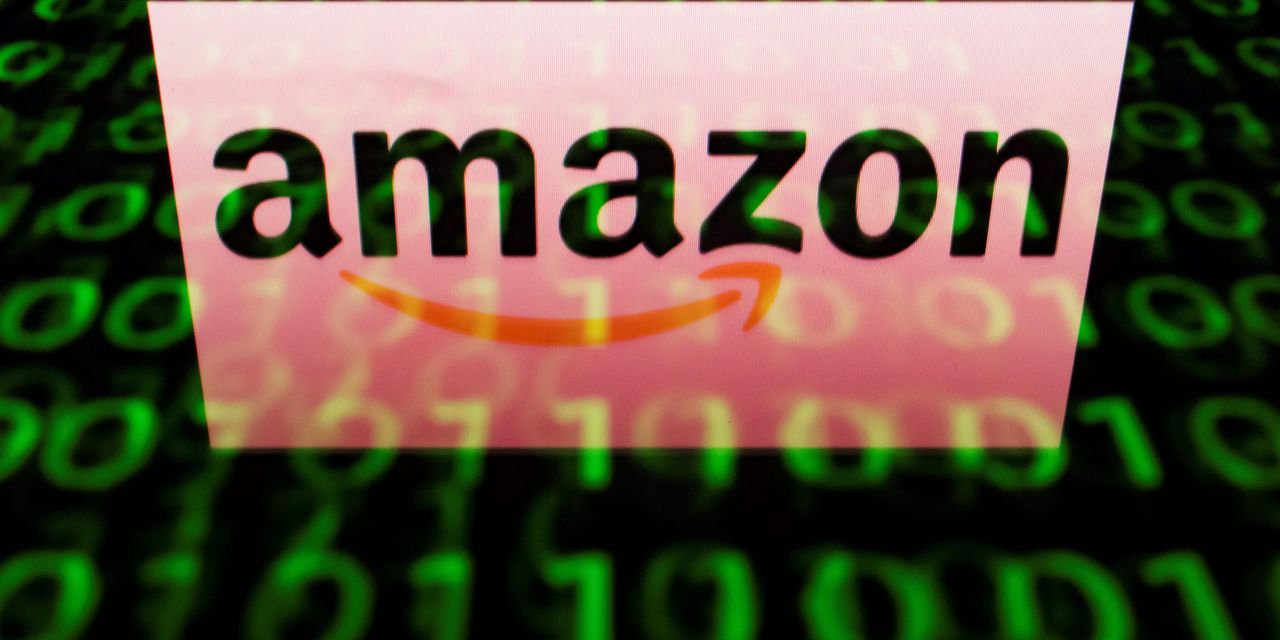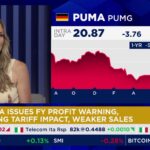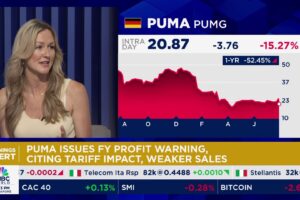
U.S. stock indexes closed lower Friday, posting a weekly loss to close out the month, with renewed concerns about a rise of cases of the delta variant COVID-19 and disappointing results from Amazon.com partly blamed for the slump.
But the benchmark S&P 500 index has posted gains for six straight months, its longest winning streak since 2018, and is only 0.6% off its record high set last Monday, according to Dow Jones Market Data.
What are major indexes doing?
- The Dow Jones Industrial Average DJIA, -0.42% fell 149.06 points, or 0.4%, to 34,935.47, after touching an intraday high in positive territory at 35,106.30.
- The S&P 500 index SPX, -0.54% declined 23.89 points, or 0.5%, to 4,395.26.
- The Nasdaq Composite Index COMP, -0.71% dropped 105.59 points, or 0.7%, to 14,672.68.
On Thursday, the Dow rose 153.60 points, or 0.4%, to close at 35,084.53, The S&P 500 finished at 4,419.15, up 18.51 points, or 0.4% and the Nasdaq Composite advanced 15.68 points, or 0.1%, to end at 14,778.26.
Stocks finished higher on Thursday after data that showed gross domestic product growing at an annualized pace of 6.5% in the second quarter. Investors also shook off a lukewarm debut for shares of commission-free trading app Robinhood Markets HOOD, +0.95%.
For the week, the Dow and S&P 500 each declined 0.4 % while the Nasdaq slid 1.1%. All three indexes were up for July, with Dow showing a 1.3% monthly gain, the S&P 500 rising 2.3% and the Nasdaq up 1.2% for the month, FactSet data show.
What’s driving the market?
U.S. stocks fell in the final day and week of trading in July, weighed down by worries over Covid-19 and a slide in Amazon.com shares after the technology giant’s miss on sales expectations.
The pullback took shape after stock-market selling in Asia capped a withering week. Hong Kong’s Hang Seng HSI, -1.35% marked its worst weekly decline since February and its steepest monthly drop since October of 2018, FactSet data show.
Some analysts pointed to fresh worries about the delta variant as an internal document from the Centers for Disease Control and Prevention indicated increasing official concern over the spread of the variant. First reported by The Washington Post, the data said the variant may be as easily spread from vaccinated and unvaccinated individuals and was as “transmissible as chickenpox.”
Also former Food and Drug Administration commissioner Scott Gottlieb told CNBC on Friday, that he believes that new coronavirus infections could be accelerating.
“I wouldn’t be surprised if, on the whole, we’re infecting up to a million people a day right now, and we’re just picking up maybe a 10th of that or less than a 10th of that,” he told CNBC’s Squawk Box.
“U.S. stocks were dragged down by a big miss from Amazon and cautious comments from former FDA chief Scott Gottleib that he wouldn’t be surprised if, on the whole, we’re infecting up to a million people a day right now,” wrote Edward Moya, senior market analyst at Oanda, in a research note.
Technology stocks contributed to the drop in U.S. stocks, with Amazon.com AMZN, -7.56% shares closing 7.6% lower after second-quarter results showed a miss on sales and a forecast for the third quarter, suggesting a slowdown in e-commerce activity is set to continue.
On the tech front, “there’s little forgiveness, especially when you are sitting at all-time highs,” said Shawn Cruz, TD Ameritrade senior market strategist, in a phone interview Friday.
More than half of companies in the S&P 500 index have now reported second-quarter earnings, Cruz said, with investors digesting that data along with the guidance and commentary from management as they wrapped up a final day of trading for the month. Some might begin to reposition their portfolios, he suggested, as the market now has had a “pretty good look” at the results, which so far have been strong.
A heavy week of corporate earnings reports comes as data showed that inflation in the U.S. rose sharply again in June, as gauged by the so-called PCE price index, the Federal Reserve’s preferred measure of pricing pressures, which rose a sharp 0.5% for the month and 4% for the year.
The increase over the past year remained at a 13-year high, raising the cost of living for consumers and casting a shadow over a strong economic recovery from COVID-19. The surge in prices is largely tied to the reopening of businesses and widespread shortages of supplies and labor spawned by the pandemic.
Meanwhile, consumer spending rose a sturdy 1% in June, the government said Friday. On Thursday, the government said consumer outlays surged almost 12% in June on an annualized basis, underpinning a strong economic recovery.
Separately, St Louis Federal Reserve President James Bullard said that he thinks financial markets “are very much ready for a taper,” noting that he would prefer to begin the process of scaling back on Fed’s $120 billion a month in Treasurys and mortgage-backed securities this fall and finish by the end of the first quarter of 2022. His comments come after the Fed on Wednesday held interest rates steady at a range between 0% and 0.25% and emphasized the central bank’s view that rising prices are almost entirely the result of the reopening of the U.S. economy.
Friday’s economic reports follow a reading on Thursday that showed U.S. gross domestic product grew at an annualized pace of 6.5% in the second quarter, falling short of the average forecast of 9.1% produced by a survey of economists by The Wall Street Journal. Separately, data from the Labor Department showed first-time applications for unemployment benefits fell 24,000 last week to 400,000.
A final reading of the University of Michigan’s consumer-sentiment index fell to 81.2 in July from a reading of 85.5 in June, though it exceeded the initial July figure of 80.8. Economists had expected a reading of 80.5, according to a Wall Street Journal survey.
“Consumers expressed greater pessimism over the outlook in July as higher inflation and greater Delta spread weighed on sentiment,” wrote Oxford Economics economist Mahir Rasheed, in a Friday research note.
“Concerns over inflation continue to plague sentiment as buying conditions for housing, vehicles, and other household durables slumped to a new cycle low and their lowest level since the early 1980s,” the U.S. economist wrote.
But considering the dovish stance of central banks along with strong corporate earnings as the economy continues to reopen, “it’s very, very unlikely that the delta variant is going to create anything like we saw in the pandemic at the front-end,” according to Tom Mantione, a managing director with UBS Private Wealth Management.
With stocks trading lower Friday, Mantione suggested in a phone interview that investors might seek buying opportunities in stocks tied to the reopening trade, such as energy and banks, as well as longer-term opportunities in thematic tech trends that could tie into areas like health care.
“In our view, investors can use this volatility to round out portfolios,” he said.
Read: Will the passing of the ‘performance baton’ keep U.S. stocks moving higher?
Which companies were in focus?
- Amazon AMZN late Thursday reported second-quarter earnings of $7.78 billion, or $15.12 a share, up from $10.30 a share a year ago, when shelter-in-place requirements from the COVID-19 pandemic began and led to big uptakes in e-commerce. Sales grew to $113.1 billion from $88.9 billion a year ago, missing expectations as sales that had been growing more than 40% in recent quarters fell to growth of 27%. Shares closed 7.6% lower Friday.
- Shares of Robinhood Markets Inc. HOOD rose 1%. The stock of the newly public, no-fee trading app debuted on Thursday at $38.00.
- Shares of Exxon Mobil Corp. XOM, -2.31% fell 2.3%, after the oil giant swung to the highest second-quarter profit since the end of 2019 as revenue more than doubled to well above forecasts.
- Shares of Chevron Corp. CVX fell 0.7%, after the oil giant swung to a second-quarter profit and reported revenue that beat expectations, with free cash flow reaching the highest in two years.
- Shares of Baker Hughes Co. BKR gained 0.3% after the oilfield products and services company said it set a $2 billion stock repurchase program.
- Shares of Procter & Gamble Co. PG, +1.97% increased 2% after the consumer products giant reported fiscal fourth-quarter profit and sales that rose above expectations, with the strongest growth in its healthcare and beauty businesses.
- Shares of Caterpillar Inc. CAT, -2.73% dropped 2.7% after the construction and mining equipment company reported a second-quarter net profit that tripled and revenue that topped forecasts, even as the largest construction business came up short.
- Illinois Tool Works Inc. ITW reported second-quarter that more than doubled and beat expectations, and raised the full-year outlook, as the all business segments saw double-digit organic revenue growth in the face of rising raw materials costs and supply chain challenges. Its stock slipped 0.8%.
- L Brands Inc. LB said Friday it will invest $45 million over at least the next five years to implement a suite of corporate governance measures agreed to as part of a settlement of stockholder derivative claims. Shares of L Brands, parent of Victoria’s Secret and Bath & Body Works, rose 0.7%.
- Capri Holdings Ltd. CPRI shares rose 12.5% after the luxury company, and parent of Michael Kors, reported fiscal first-quarter earnings that blew past expectations and gave guidance ahead of consensus.
- Bloomin’ Brands Inc. shares BLMN fell 0.2% even as the parent of Outback Steakhouse beat consensus estimates for the second quarter and offered upbeat guidance.
- VF Corp. VFC , represented by brands Vans, The North Face and Timberland, reported fiscal first-quarter net income of $324.2 million, or 82 cents per share, after a loss of $285.6 million, or 73 cents per share, last year. Shares fell 5.1%.
What did other markets do?
- The yield on the 10-year Treasury note TMUBMUSD10Y, 1.228% fell 3 basis points Friday to 1.239%, down about 20 basis points for the month.
- The ICE U.S. Dollar Index DXY, a measure of the currency against a basket of six major rivals, was up 0.3%.
- Oil futures ended higher Friday for a fourth straight monthly gain, with the U.S. benchmark CL.1, +0.26% up nearly 0.5% to settle at $73.95 a barrel; while December gold futures GC00 GCZ21 fell 1% to settle at $1,817.20 an ounce, but booked weekly and monthly gains.
- In European equities, the Stoxx 600 Europe index XX:SXXP ended 0.5% lower, while London’s FTSE 100 UK:UKX closed down 0.7%. For the week, the Stoxx 600 is up 0.05%, and locked a 2% monthly rise, while the FTSE 100 notched a weekly advance of 0.07% but booked a decline in July of less than 0.1%.
- In Asia, Hong Kong’s Hang Seng closed 1.4% lower and booked a nearly 5% loss for the week. The index ended down nearly 10% in July. The Shanghai Composite CN:SHCOMP finished down 0.4% and logged 4.3% weekly slump and fell 5.4% for the month. Meanwhile, Japan’s Nikkei 225 JP:NIK declined 1.8% overnight in Asia, falling 1% for the week and 5.2% for the month. The China CSI 300 000300, -0.81% closed down 0.8% for the day, 5.5% for the week and booked a nearly 8% monthly decline.
— Barbara Kollmeyer contributed to this report.











